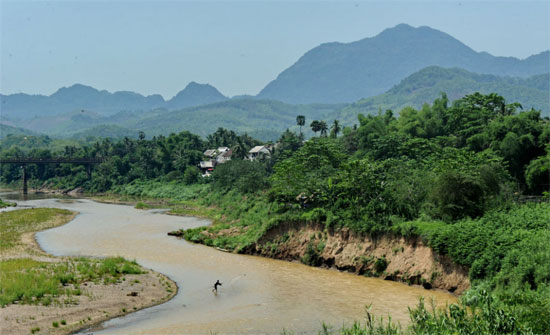The risk of losing forest area in the Mekong sub-region
The International Fund for Nature Conservation (WWF) has just urged Mekong sub-region countries to see green growth to maintain forest resources.
WWF's latest report warned that the Greater Mekong sub-region in Southeast Asia is at risk of losing more than a third of the remaining forest area in the next two decades if regional governments do not increase. strengthen protection, respect and restore natural capital and go towards green growth.
The WWF analysis shows that the Greater Mekong sub-region now maintains about 98 million hectares of natural forest, equal to more than half of the region's land area. However, with the current rate of deforestation, this area is expected to lose quickly.
From 1973 to 2009, five countries in the Greater Mekong sub-region lost nearly a third of the remaining forest cover. During this time, Cambodia lost 22% of the forest area of 1973, Laos and Myanmar lost 24%, Thailand and Vietnam lost 43%.

The Mekong River in Laos. (Photo: Reuters)
Large areas of important forest areas also significantly reduced across the region, from 70% in 1973 to 20% in 2009. Critical forests are areas of forest that are not divided and are at least 3 wide. , 2km 2 .
If the trend continues, WWF predicts that by 2030, only 14% of the remaining area of the Mekong sub-region will be able to maintain habitat for wild populations.
Report "Greater Mekong Sub-region Ecosystems: past trends, current status and future scenarios" provide analysis of the current situation and future context of key forests, Freshwater ecosystems in the region and of the most endangered species depend on these ecosystems.
The report builds two scenarios for the region's ecosystems. A scenario that predicts potential for ecosystems until 2030 if the countries continue to develop under the unsustainable growth model, in which deforestation and degradation take place In the past decade, it has continued.
The second scenario is based on the assumption of a 50% reduction in annual deforestation rates and a future based on green growth. In the second assumption, according to the model of green growth, the key forest area in 2009 in all 5 Greater Mekong Subregion countries remains intact.
'The green economy approach is the choice for the future of the Greater Mekong Subregion,' said Peter Cutter, WWF-Greater Mekong Landscape Conservation Manager. "Regional leaders have affirmed that sustainable economic growth must go hand in hand with maintaining healthy ecosystems, requiring immediate intervention to avoid permanent environmental degradation." .
The report also provides data on a dramatic decline in populations of some of the region's most important and symbolic species, including tigers, Asian elephants, Irrawaddy dolphins and endemic saola.
"Increased and more sustainable investment in maintaining the integrity of the ecosystem must become one of the priorities at the landscape, national and regional level," Mr. Cutter said.
- Ecological crisis threatens the Mekong sub-region
- Do not dig more channels in the forest
- Environmental protection of surface water in the Mekong Delta
- The whole Mekong Delta is subsiding at a rate of nearly 2.5cm per year
- Five Mekong sub-countries fight smog pollution
- Mekong subregion: the most important biological region on the planet
- Mekong sub-region focuses on green growth
- Climate change threatens the Mekong region
- Discovered 163 new species in the Mekong region
- Launched the first world map of Earth forest area
- 139 new species were discovered in the Mekong region
- Deforested area in Mexico increased rapidly in 10 years
 Is the magnetic North Pole shift dangerous to humanity?
Is the magnetic North Pole shift dangerous to humanity? Washington legalizes the recycling of human bodies into fertilizer
Washington legalizes the recycling of human bodies into fertilizer Lightning stone - the mysterious guest
Lightning stone - the mysterious guest Stunned by the mysterious sunset, strange appearance
Stunned by the mysterious sunset, strange appearance